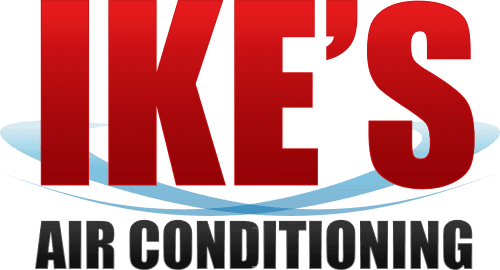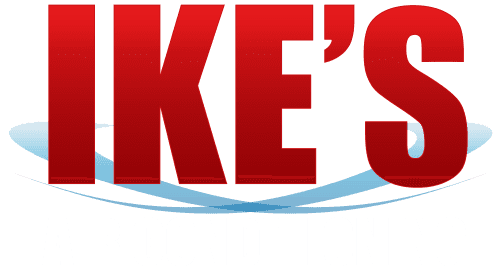Efficient heating systems are integral to a comfortable home environment. No more struggling to warm up your space—the system works seamlessly to create a cozy atmosphere. The reduced effort means less wear and tear on the unit's components. This extends the lifespan of your heating system and minimizes the chances of malfunctions, sparing you the inconvenience of frequent repairs.
By prioritizing efficiency, you're not just keeping warm but contributing to your heating unit’s longevity and reliability.
Ductwork plays a crucial role in optimizing your heating system's performance. It maintains proper airflow throughout your home, effectively distributing warm air. Every room in your house stays at a consistently comfortable temperature. Imagine a home where each corner receives warmth without any cold spots. Well-designed ductwork is the key to achieving this balance, making your heating system truly effective.
Ready to optimize your heating system? IKE'S Air Conditioning provides professional duct services in San Antonio. Contact us at (210) 405-6116 today.
Understanding Ductwork
Ductwork serves as the conduit for distributing airflow throughout your home. Like the circulatory system of your heating setup, these pathways allow warm air to reach every corner of your living space. Without efficient ducts, your heating system's performance is compromised, leading to uneven temperatures and potential energy wastage. Understanding the essential function of ductwork is fundamental to appreciating how it contributes to the overall effectiveness of your heating system.
Various types of ductwork materials are available and have different impacts on efficiency. For example:
- Sheet metal: Known for its durability, sheet metal ductwork is a robust option that can withstand the test of time, providing long-lasting efficiency.
- Fiberboard: This material can maintain temperatures longer, contributing to consistent warmth in your home.
- Fiberglass: Ideal for reducing heat loss as air travels through the ducts, fiberglass is an energy-efficient option to enhance overall system performance.
- Flexible ducts: Constructed with flexible steel coils, these ducts offer a cost-effective and easy-to-install alternative. While they are cheaper, they maintain efficiency, making them a practical choice for various heating setups.
Understanding the characteristics of each duct material empowers you to make informed decisions based on your heating system requirements and budget considerations.
Common Issues with Ductwork and Implications on Heating Efficiency
Understanding ductwork is about recognizing its function and materials and being aware of potential challenges that can affect heating efficiency.
Let's explore the hurdles that, when addressed, can keep your home consistently warm and energy-efficient:
- Damaged or dirty ducts: Cracks, leaks, or accumulated dirt in ducts can impede airflow, leading to inefficiencies in your heating system.
- Poorly sealed ducts: Inadequate sealing allows warm air to escape before reaching its destination, resulting in energy wastage and reduced overall efficiency.
- Improper insulation: Lack of insulation or insulation in poor condition can cause heat loss, forcing your heating system to work harder to compensate.
- Collapsed ducts: Structural issues such as collapsed ducts restrict airflow, disrupting the balance in temperature distribution throughout your home.
Regular inspection and maintenance are crucial to avoiding these challenges and maintaining a consistently warm and comfortable home.
Proper Ductwork Design
The significance of a well-designed duct system cannot be overstated when aiming for optimal heating efficiency. A properly designed system can distribute heat throughout your home, reaching every room and maintaining the desired temperature.
Factors considered in ductwork design include the following:
- Duct configurations: Ducts can be configured in various ways, and the choice depends on the layout of your space. Options include the spider configuration, radial configuration, trunk and branch layout, and perimeter loop design.
- Size considerations: The size of the ducts is a critical factor influencing efficiency. Properly sized ducts maintain airflow, preventing issues such as inadequate heating or excessive energy consumption.
- Layout planning: The duct layout suits your home's unique characteristics. Whether a sprawling residence or a compact space, the configuration maximizes heat distribution and efficiency.
Seeking a professional's assistance can help optimize your ductwork performance. A skilled technician can thoroughly assess your space, considering size, layout, and specific heating requirements. With this information, they can design the ductwork to enhance the efficiency of your heating unit.
Maintenance Practices
Regular inspection and cleaning routines for ductwork are essential practices in maintaining airflow efficiency and contributing to the longevity of your heating system. By routinely examining and cleaning ducts, you prevent the accumulation of dust, debris, and other contaminants that can obstruct airflow.
This proactive approach not only preserves the efficiency of your heating system but also allows for the early detection of minor problems. Addressing issues in their early stages helps avoid potential breakdowns. It keeps your heating system operating smoothly, providing consistent warmth throughout your home.
Addressing common issues such as leaks and insulation problems is best entrusted to a professional. Professionals can identify and repair issues using appropriate materials and methods.
Duct leaks can significantly impact efficiency by allowing heated air to escape, leading to energy wastage and uneven heating. Insulation problems, if left unattended, can compromise the effectiveness of your heating system. Professional intervention allows these issues to be addressed comprehensively, contributing to your heating system's overall efficiency and performance.
Energy Efficiency and Cost Savings
When ducts are well-designed and properly maintained, they facilitate the smooth and efficient distribution of warm air throughout your home. The energy generated by your heating system is effectively utilized, minimizing waste. In contrast, poorly designed or damaged ductwork can result in energy loss, where a significant portion of the warm air fails to reach its intended destination.
The cost implications of inefficient ductwork are substantial. A leaky duct system, for instance, allows precious warmed air to escape, leading to energy wastage. Additionally, the lost hot air is often replaced by cooler air from the surroundings, making the heating system work harder to maintain the desired temperature. This increased workload translates into higher energy consumption and, consequently, higher utility bills. Addressing inefficient ductwork prevents energy loss and offers the potential for significant savings in the long run.
The Critical Role of Ductwork in Heating Efficiency
Ducts are the conduits through which warmth is distributed, and their design and condition directly impact the overall performance of your heating unit. Efficient ductwork helps the heated air reach every corner of your home, maintaining a comfortable temperature throughout.
Regular inspections, cleaning, and prompt resolution of issues contribute to the longevity and efficiency of your heating system.
At IKE'S Air Conditioning in San Antonio, we understand the importance of efficient ductwork. Our team is ready to assess your ducts and perform the necessary services to enhance the efficiency of your heating system. Call (210) 405-6116 or contact us online today.

